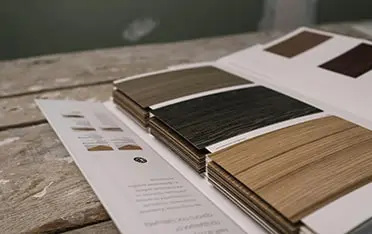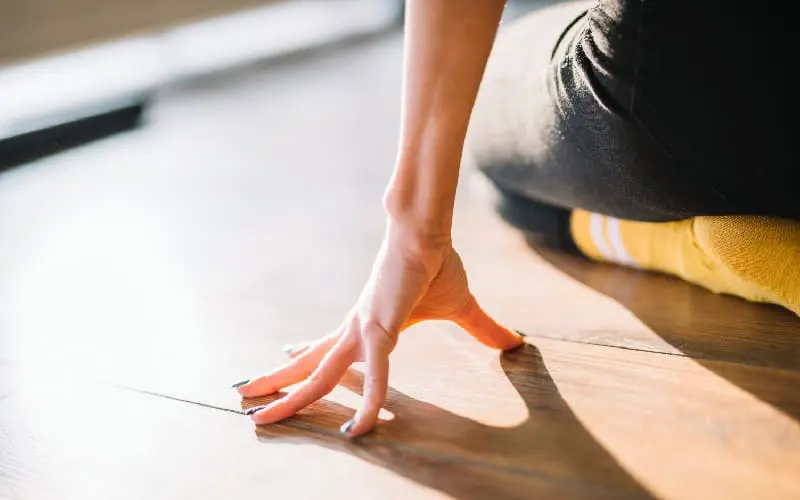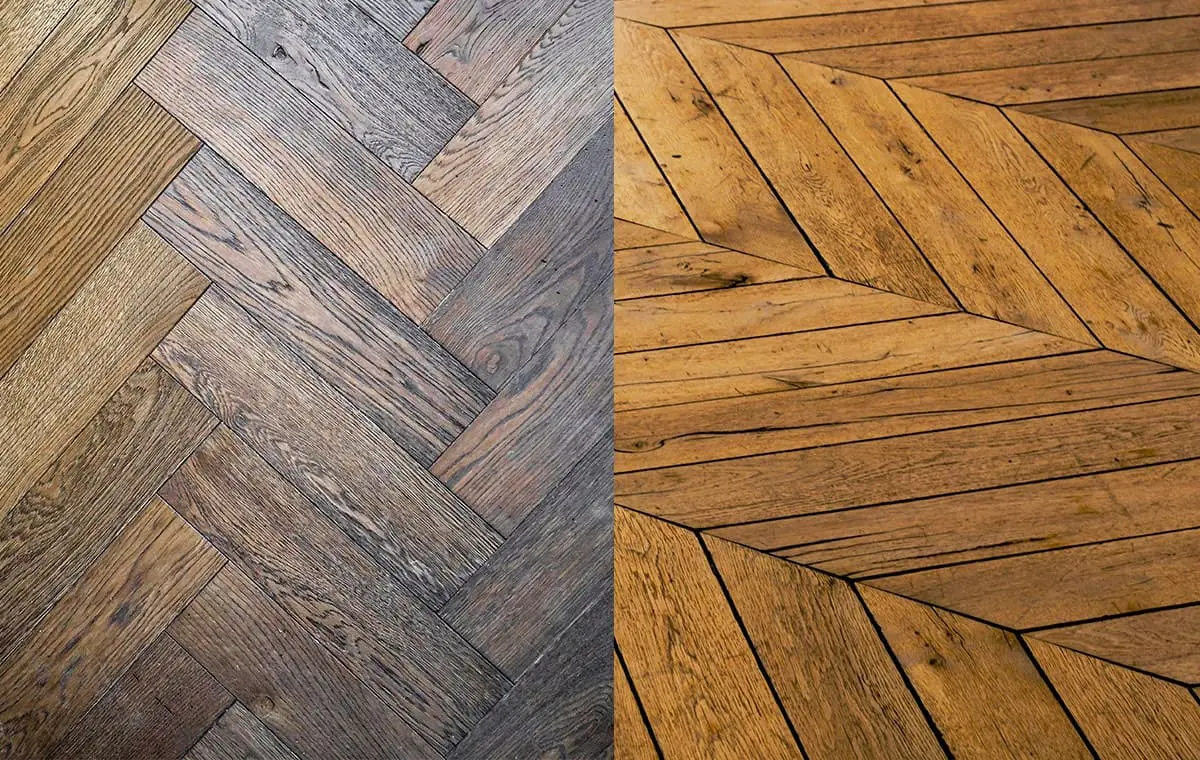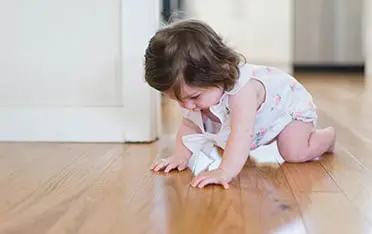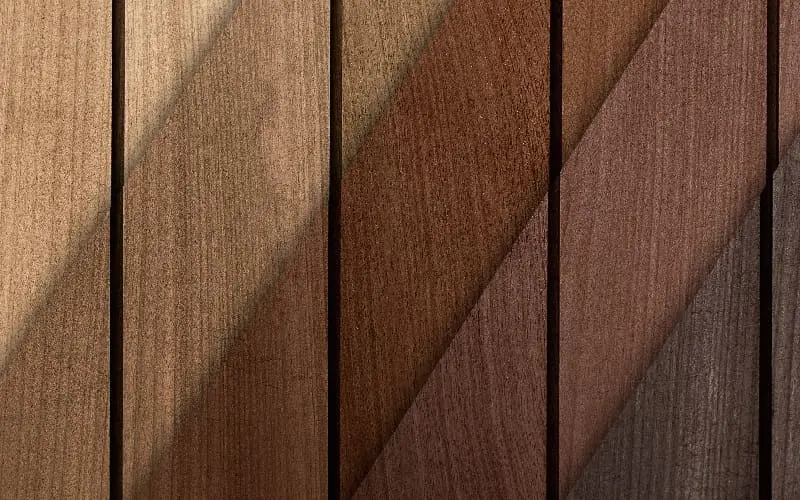One of the most important aspects of interior design is picking the perfect wall colour to match your flooring. The right floor and wall colour will depend on the room’s style, purpose, and existing décor. It doesn’t matter whether you are renovating your home or are about to complete your new home; this blog will help you learn how to match wood flooring with a wall colour for a beautiful result.
Matching Wall Colour With Wood Floors Matters
These two elements set the tone for the whole space, defining its character and style. According to Elle Décor, clever colour combinations can elevate a room’s sophistication.
Walls and floors should complement each other to create a balanced and inviting atmosphere rather than compete for attention. Aligning colour choices with your interior style ensures consistency and enhances the overall design aesthetic.
How to Choose the Best Wall Colours for Your Wood Floors
In selecting the best wall and floor colour combinations, it is necessary to study the environment and all its characteristics in depth.
There are essential principles you should keep in mind:
Room Size
When you want to know how to choose the best wall and floor colours, the room size is a fundamental aspect to consider. Small rooms usually need light-coloured walls and floors to increase the perceived size of the environment.
On the other hand, in larger rooms, light-coloured combinations could risk making the environment cold, while darker hues add intimacy to larger spaces and offer a cosier and more grounded feeling.
Undertone
The undertone is one of the most overlooked but crucial aspects of choosing the best colour combination. Generally, light woods like ash or grey have cooler undertones, dark woods such as mahogany or espresso have rich, warm undertones, and medium woods have an equal range of warm and cool undertones, which are called neutral undertones. Warm floor undertones pair well with warm wall colours. In contrast, cool floor undertones harmonise well with cooler shades.
Also read: Choose the Right Patterned Flooring
Contrast
Creating contrast between your floors and walls can bring character to your space. Imagine how dark floors with light walls create a striking and dynamic effect. This is called high-contrast combinations.
Pairing beige walls with light Herringbone Laminate Flooring creates a seamless and calming atmosphere. This is an example of low-contrast
If you want something in between, tone-on-tone or medium colour Herringbone Laminate Flooring combinations are a good option.
Harmony
When wall and floor colours match, the room feels right. Harmonious colours create calm and a smooth visual flow, allowing the eyes to travel through the room without distraction. Choosing colours with the same tone ensures a cohesive and natural look. Depending on the room’s purpose, you can go light-on-light or dark-on-dark. This approach adds a sense of continuity and works well in relaxing areas like bedrooms or reading nooks.
See light solid wood flooring and dark solid wood flooring models.
Lighting
Lighting plays a massive role in how colours appear in a room.
Natural light brings out the underlying colour of the flooring. However, artificial light can affect the underlying tone of the flooring, depending on the temperature. Warm light brings out cosy, warm tones, while cool white light accentuates cooler hues. Choosing a light colour palette for spaces that don’t get much natural light can help brighten the space and create the illusion of openness. On the other hand, rooms that get plenty of natural light—regardless of their size—look more beautiful and bold with darker colours.
see dark models of Herringbone Flooring
Colour combination for different rooms
Different rooms have different uses, so it is essential to consider each room’s intended use before applying a colour combination. It is also crucial to choose pairings that work well with your existing furniture and décor.
Soft, muted tones like sage green, warm beige, or dove grey can promote calm and relaxation, making them ideal for bedrooms and living rooms. A white-on-white pairing can create a unified, reassuring look, especially in spaces like bathrooms, kitchens, and areas where you want to make a bright, clean feeling.
also read: Tips to choose the right colour for flooring
How to Match Wall Colours with Light Wood Floors
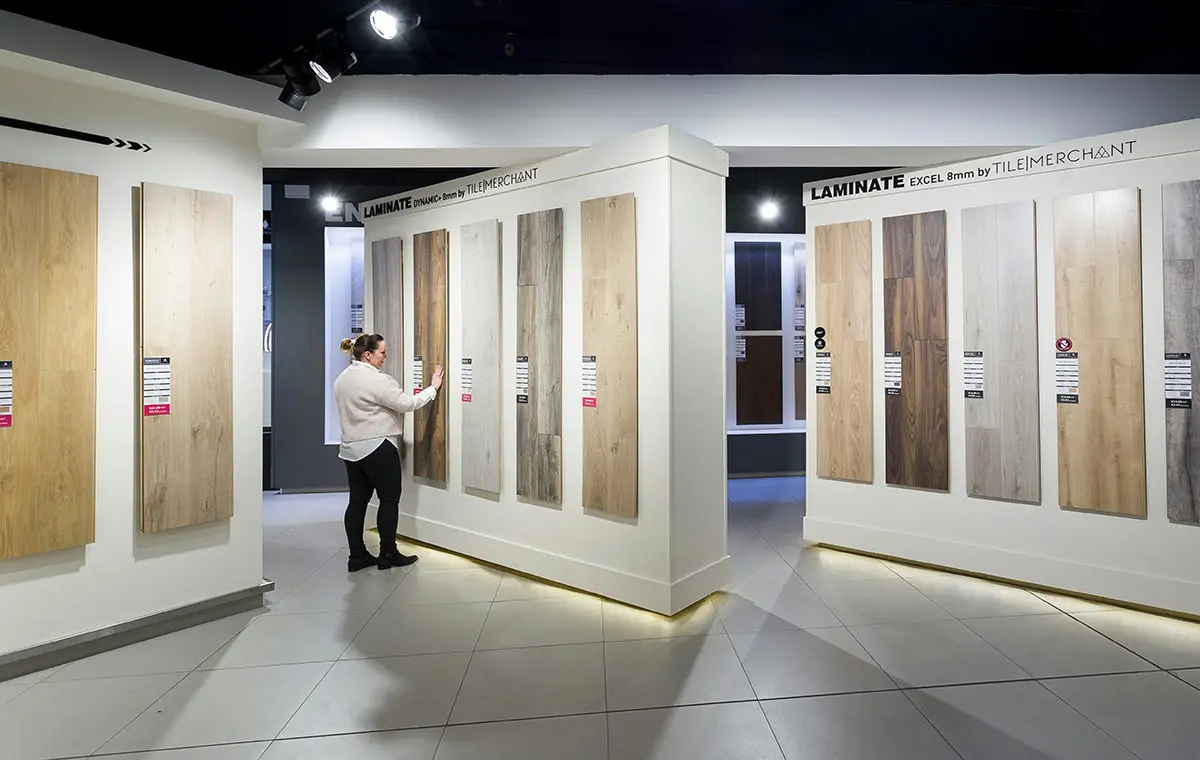
Light Engineered floors offer great versatility and work well in almost any setting. Light-coloured floors, in combination with dark walls, can create a sophisticated contrast.
Contrasting walls and floors can give your space character, especially when decorating with neutral colours. For example, you can pair a dark wall with light Grey Laminate Flooring when you want to emphasise an element such as furniture or artwork.
Soft Neutrals
Soft neutral walls, such as whites, Taupes, beiges, and light greys, create a timeless look when paired with light wood floors. This combination increases the room’s brightness and serves as an excellent backdrop for artwork.
Pastel Shades
Soft blue, pale pink, or pistachio green can add a subtle touch of colour without overpowering the space.
Bold Contrast
Combining light wood floors with dark wall colours such as deep red, forest green, charcoal, or navy creates a luxurious and striking look that will enhance any décor.
If you want luxury flooring models, check this page: LUXURY VINYL (LVT)
How to Match Wall Colours with Dark Wood Floors
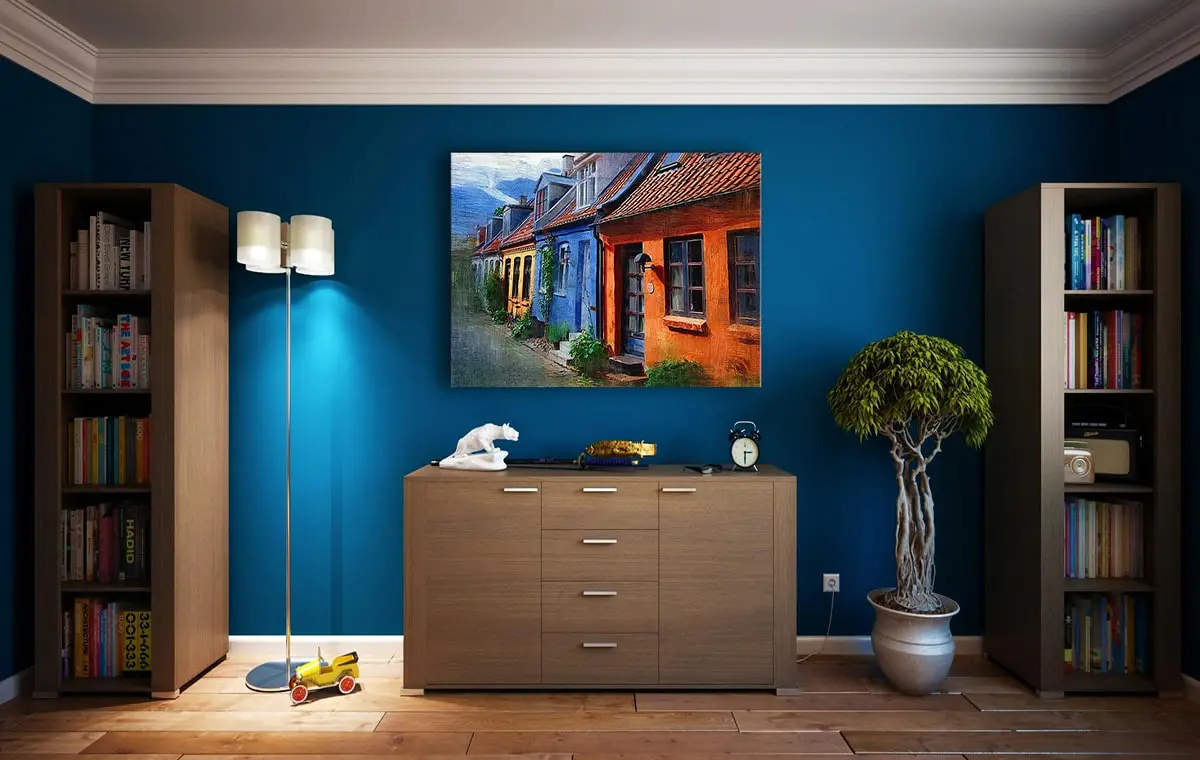
Dark wood floors add a sense of richness and warmth to any space if you know how to pair them with different wall colours.
Light Walls
Dark wood floors can stand out when paired with light-coloured walls, such as crisp white or soft cream. This combination will brighten the room and is the best choice for dynamic architectural spaces.
Warm Walls
Warm wall colours like terracotta or muted gold complement the richness of dark wood floors, creating a cosy and inviting atmosphere. This pairing enhances the room’s warmth and depth.
Dark Walls
Pairing dark with dark works well in spaces where you want to introduce a sense of drama and sophistication. However, to prevent the room from feeling too enclosed, it’s essential to incorporate natural or artificial light and balance the richness of the walls with lighter furnishings, such as light-coloured rugs, throw pillows, or furniture.
Rich jewel wall tones like emerald green, ruby red, and sapphire blue create luxurious, dramatic spaces paired with dark wood floors. They evoke mood and richness, often in maximalist or eclectic interiors.
Popular Wood Floor Colours
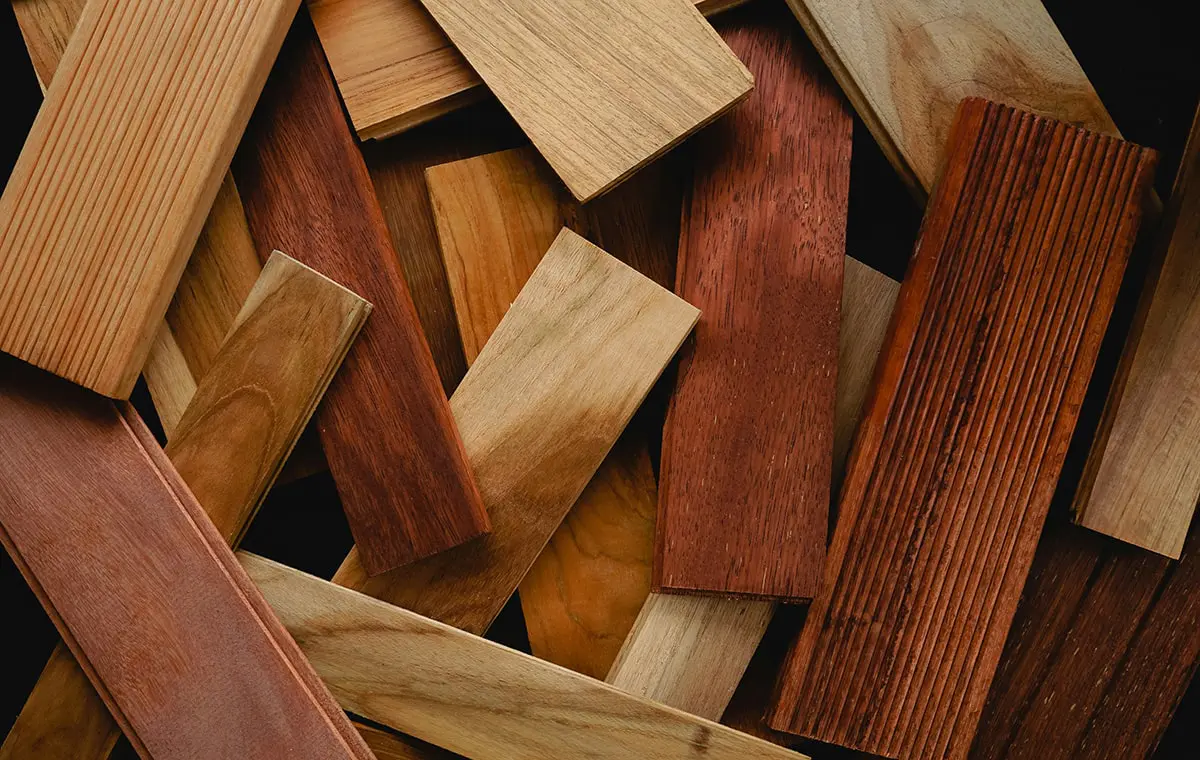
Different wood flooring species have unique characteristics that influence suitable wall colour pairings.
Best Wall Colours for Oak Floors
Oak wood flooring is one of the most popular wood flooring options, and it pairs beautifully with various wall colours. Light oak floors are best suited with soft whites, muted greys, or warm beige walls. These tones allow the natural grain of the oak to shine through without competition.
Darker oak floors, particularly red or honey oak, pair well with earthy tones like sage green, terracotta, or creamy ivory. These colours add a touch of warmth and help balance the depth of the dark oak. Ideal Home UK suggests that soft greens and blues can create an elegant contrast with the warmth of oak, particularly red oak floors.
Best Wall Colours for Maple Floors
Maple wood is typically lighter, with subtle grain patterns and a fine, even texture. Its neutral hues are often suitable for brighter, bolder wall colours. Warm coral shades can enhance maple’s natural glow.
Cool tones like mint or slate blue contrast maple’s warmth, creating a vibrant yet balanced aesthetic.
Best Wall Colours for Cherry and Walnut Floors
Cherry and walnut flooring are known for their deep, rich colours and luxurious feel. They can easily be paired with rich wall colours like olive green, navy blue, or deep burgundy.
Common Mistakes to Avoid When Matching Wall Colours with Wood Floors
Below, we highlight some of the most common errors to avoid when matching wall colours with wood floors.
Too Much Contrast
Too much contrast—like stark white walls with dark cherry floors—can have an unsightly effect on an interior design if not balanced with transitional colours or soft furnishings. Smooth transitions between walls, floors, and furniture should be maintained.
Ignoring Wood Undertones
Not paying attention to the undertone of your wood flooring can lead to visual conflict, which can affect your entire interior design. We recommend that you take the time to understand the undertone of your flooring.
Ignoring the Role of Lighting
Never underestimate the role of lighting. Lighting can dramatically alter the appearance of both floor and wall colours. It’s better to test samples under different lighting conditions.
Neglecting the Grain and Texture of the Wood
Wood’s texture and grain can affect a space’s overall feel and should not be overlooked. For example, pairing a heavy-grained wood like oak with a smooth, glossy wall can create an imbalance. Consider the texture of both elements when making your colour choices.
Expert Tips for Perfecting Your Wall and Wood Floor Combination
Some expert tips can help you combine wall colours and wood floors perfectly.
Get advice from an interior designer.
An interior designer can help you navigate undertones, lighting, and style preferences to create a cohesive look. They’ll also suggest options you may not have considered, such as accent walls or two-tone combinations.
Use Rugs and Accessories
A well-placed rug can provide the transition between contrasting wall and floor tones. Complementary cushions throws, and artwork further enhance the space and ensure a harmonious design by tying everything together.
Experiment with Samples
Before committing, use sample pots and lay wood floor swatches against them.
Follow the 60-30-10 Design Rule.
To maintain balance and avoid overwhelming the space, follow this classic design principle:
- 60% of the room should be the dominant colour (usually the walls).
- 30% should be a secondary colour (such as the flooring).
- 10% should be an accent colour (through furniture, décor, or accessories).
This approach helps distribute colour evenly throughout the room, ensuring that the colours work well together and don’t clash.
Conclusion
Choosing the right wall colour to complement your hardwood floors is essential in interior design. It’s critical to take the time to consider factors like lighting, undertones, and how the colours interact with each other. Try to see how the colour looks in natural light by using large samples and viewing them at different times of the day. Finally, remember that rules and expert tips are just a guide. The best colour combination depends on your personal preferences and style.
If you are unsure about choosing the best combination, contact us today for expert advice on creating the perfect look for your home.
For any flooring queries, drop us an email at info@flooringsurgeons.co.uk – or Visit our showrooms located in Birmingham & Wolverhampton!
Halesowen
214A Dudley Road. Halesowen, Birmingham, B63 3NJ
0121 274 8575
Monday – Friday: 9 AM – 6 PM | Weekends: 10 AM – 4 PM
Wolverhampton
317 Penn Rd, Wolverhampton, West Midlands, WV4 5QF
01902 836666
Monday – Friday: 9 AM – 6 PM | Sat: 10 AM – 4 PM | Sun: Closed
info@flooringsurgeons.co.uk
fitting@flooringsurgeons.co.uk
customerservices@flooringsurgeons.co.uk
One of the most important aspects of interior design is picking the perfect wall colour to match your flooring. The right floor and wall colour will depend on the room’s style, purpose, and existing décor. It doesn’t matter whether you are renovating your home or are about to complete your new home; this blog will help you learn how to match wood flooring with a wall colour for a beautiful result.
Matching Wall Colour With Wood Floors Matters
These two elements set the tone for the whole space, defining its character and style. According to Elle Décor, clever colour combinations can elevate a room’s sophistication.
Walls and floors should complement each other to create a balanced and inviting atmosphere rather than compete for attention. Aligning colour choices with your interior style ensures consistency and enhances the overall design aesthetic.
How to Choose the Best Wall Colours for Your Wood Floors
In selecting the best wall and floor colour combinations, it is necessary to study the environment and all its characteristics in depth.
There are essential principles you should keep in mind:
Room Size
When you want to know how to choose the best wall and floor colours, the room size is a fundamental aspect to consider. Small rooms usually need light-coloured walls and floors to increase the perceived size of the environment.
On the other hand, in larger rooms, light-coloured combinations could risk making the environment cold, while darker hues add intimacy to larger spaces and offer a cosier and more grounded feeling.
Undertone
The undertone is one of the most overlooked but crucial aspects of choosing the best colour combination. Generally, light woods like ash or grey have cooler undertones, dark woods such as mahogany or espresso have rich, warm undertones, and medium woods have an equal range of warm and cool undertones, which are called neutral undertones. Warm floor undertones pair well with warm wall colours. In contrast, cool floor undertones harmonise well with cooler shades.
Contrast
Creating contrast between your floors and walls can bring character to your space. Imagine how dark floors with light walls create a striking and dynamic effect. This is called high-contrast combinations.
Pairing beige walls with light Herringbone Laminate Flooring creates a seamless and calming atmosphere. This is an example of low-contrast
If you want something in between, tone-on-tone combinations are a good option.
Harmony
When wall and floor colours match, the room feels right. Harmonious colours create calm and a smooth visual flow, allowing the eyes to travel through the room without distraction. Choosing colours with the same tone ensures a cohesive and natural look. Depending on the room’s purpose, you can go light-on-light or dark-on-dark. This approach adds a sense of continuity and works well in relaxing areas like bedrooms or reading nooks.
Lighting
Lighting plays a massive role in how colours appear in a room.
Natural light brings out the underlying colour of the flooring. However, artificial light can affect the underlying tone of the flooring, depending on the temperature. Warm light brings out cosy, warm tones, while cool white light accentuates cooler hues. Choosing a light colour palette for spaces that don’t get much natural light can help brighten the space and create the illusion of openness. On the other hand, rooms that get plenty of natural light—regardless of their size—look more beautiful and bold with darker colours.
Colour combination for different rooms
Different rooms have different uses, so it is essential to consider each room’s intended use before applying a colour combination. It is also crucial to choose pairings that work well with your existing furniture and décor.
Soft, muted tones like sage green, warm beige, or dove grey can promote calm and relaxation, making them ideal for bedrooms and living rooms. A white-on-white pairing can create a unified, reassuring look, especially in spaces like bathrooms, kitchens, and areas where you want to make a bright, clean feeling.
How to Match Wall Colours with Light Wood Floors

Light wood floors offer great versatility and work well in almost any setting. Light-coloured floors, in combination with dark walls, can create a sophisticated contrast.
Contrasting walls and floors can give your space character, especially when decorating with neutral colours. For example, you can pair a dark wall with light Grey Laminate Flooring when you want to emphasise an element such as furniture or artwork.
Soft Neutrals
Soft neutral walls, such as whites, Taupes, beiges, and light greys, create a timeless look when paired with light wood floors. This combination increases the room’s brightness and serves as an excellent backdrop for artwork.
Pastel Shades
Soft blue, pale pink, or pistachio green can add a subtle touch of colour without overpowering the space.
Bold Contrast
Combining light wood floors with dark wall colours such as deep red, forest green, charcoal, or navy creates a luxurious and striking look that will enhance any décor.
How to Match Wall Colours with Dark Wood Floors

Dark wood floors add a sense of richness and warmth to any space if you know how to pair them with different wall colours.
Light Walls
Dark wood floors can stand out when paired with light-coloured walls, such as crisp white or soft cream. This combination will brighten the room and is the best choice for dynamic architectural spaces.
Warm Walls
Warm wall colours like terracotta or muted gold complement the richness of dark wood floors, creating a cosy and inviting atmosphere. This pairing enhances the room’s warmth and depth.
Dark Walls
Pairing dark with dark works well in spaces where you want to introduce a sense of drama and sophistication. However, to prevent the room from feeling too enclosed, it’s essential to incorporate natural or artificial light and balance the richness of the walls with lighter furnishings, such as light-coloured rugs, throw pillows, or furniture.
Rich jewel wall tones like emerald green, ruby red, and sapphire blue create luxurious, dramatic spaces paired with dark wood floors. They evoke mood and richness, often in maximalist or eclectic interiors.
Popular Wood Floor Colours

Different wood flooring species have unique characteristics that influence suitable wall colour pairings.
Best Wall Colours for Oak Floors
Oak is one of the most popular wood flooring options, and it pairs beautifully with various wall colours. Light oak floors are best suited with soft whites, muted greys, or warm beige walls. These tones allow the natural grain of the oak to shine through without competition.
Darker oak floors, particularly red or honey oak, pair well with earthy tones like sage green, terracotta, or creamy ivory. These colours add a touch of warmth and help balance the depth of the dark oak. Ideal Home UK suggests that soft greens and blues can create an elegant contrast with the warmth of oak, particularly red oak floors.
Best Wall Colours for Maple Floors
Maple wood is typically lighter, with subtle grain patterns and a fine, even texture. Its neutral hues are often suitable for brighter, bolder wall colours. Warm coral shades can enhance maple’s natural glow.
Cool tones like mint or slate blue contrast maple’s warmth, creating a vibrant yet balanced aesthetic.
Best Wall Colours for Cherry and Walnut Floors
Cherry and walnut floors are known for their deep, rich colours and luxurious feel. They can easily be paired with rich wall colours like olive green, navy blue, or deep burgundy.
Common Mistakes to Avoid When Matching Wall Colours with Wood Floors
Below, we highlight some of the most common errors to avoid when matching wall colours with wood floors.
Too Much Contrast
Too much contrast—like stark white walls with dark cherry floors—can have an unsightly effect on an interior design if not balanced with transitional colours or soft furnishings. Smooth transitions between walls, floors, and furniture should be maintained.
Ignoring Wood Undertones
Not paying attention to the undertone of your wood flooring can lead to visual conflict, which can affect your entire interior design. We recommend that you take the time to understand the undertone of your flooring.
Ignoring the Role of Lighting
Never underestimate the role of lighting. Lighting can dramatically alter the appearance of both floor and wall colours. It’s better to test samples under different lighting conditions.
Neglecting the Grain and Texture of the Wood
Wood’s texture and grain can affect a space’s overall feel and should not be overlooked. For example, pairing a heavy-grained wood like oak with a smooth, glossy wall can create an imbalance. Consider the texture of both elements when making your colour choices.
Expert Tips for Perfecting Your Wall and Wood Floor Combination
Some expert tips can help you combine wall colours and wood floors perfectly.
Get advice from an interior designer.
An interior designer can help you navigate undertones, lighting, and style preferences to create a cohesive look. They’ll also suggest options you may not have considered, such as accent walls or two-tone combinations.
Use Rugs and Accessories
A well-placed rug can provide the transition between contrasting wall and floor tones. Complementary cushions throws, and artwork further enhance the space and ensure a harmonious design by tying everything together.
Experiment with Samples
Before committing, use sample pots and lay wood floor swatches against them.
Follow the 60-30-10 Design Rule.
To maintain balance and avoid overwhelming the space, follow this classic design principle:
- 60% of the room should be the dominant colour (usually the walls).
- 30% should be a secondary colour (such as the flooring).
- 10% should be an accent colour (through furniture, décor, or accessories).
This approach helps distribute colour evenly throughout the room, ensuring that the colours work well together and don’t clash.
Conclusion
Choosing the right wall colour to complement your hardwood flooring is essential in interior design. It’s critical to take the time to consider factors like lighting, undertones, and how the colours interact with each other. Try to see how the colour looks in natural light by using large samples and viewing them at different times of the day. Finally, remember that rules and expert tips are just a guide. The best colour combination depends on your personal preferences and style.
If you are unsure about choosing the best combination, contact us today for expert advice on creating the perfect look for your home.
For any flooring queries, drop us an email at info@flooringsurgeons.co.uk – or Visit our showrooms located in Birmingham & Wolverhampton!
Halesowen
214A Dudley Road. Halesowen, Birmingham, B63 3NJ
0121 274 8575
Monday – Friday: 9 AM – 6 PM | Weekends: 10 AM – 4 PM
Wolverhampton
317 Penn Rd, Wolverhampton, West Midlands, WV4 5QF
01902 836666
Monday – Friday: 9 AM – 6 PM | Sat: 10 AM – 4 PM | Sun: Closed
info@flooringsurgeons.co.uk
fitting@flooringsurgeons.co.uk
customerservices@flooringsurgeons.co.uk



